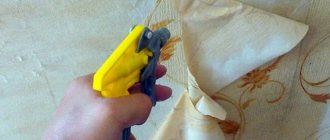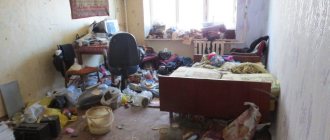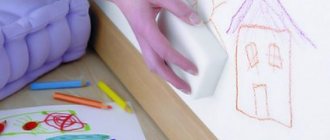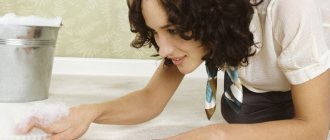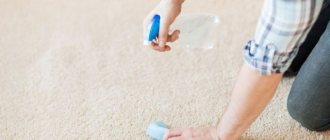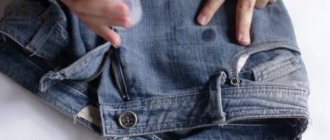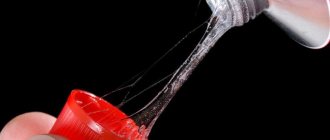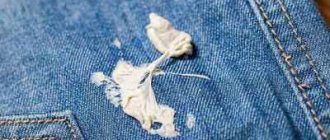Content:
1. American style cleaning 1.1. Cleaning using the hug principle 1.2. David Allen's Two Minute Rule 1.3. Cleaning system Anonymous lazy people 1.4. Burning house method 1.5. Fly Lady, or Jet Housewives 1.6. Cleaning system Messy sisters
2. Cleaning in German 2.1. Sparkling House, or Sheep, Ducks and Worms" 2.2. Discarded shoes
3. Cleaning in Swedish 3.1. Margareta Magnussen and her mortal cleaning
4. Cleaning in Japanese 4.1. KonMari 4.2. Fumio Sasaki method 4.3. Nagisa Tatsumi Method 4.4. Yukiko Kaneko Method
5. General cleaning 6. Cleaning and Space Organizers 6.1. Save the cleaning! 6.2. How to store everything and lose nothing
Features of cleaning services
The list of cleaning company services is wide – from simple window washing to general cleaning work after major renovations. The cost varies depending on the degree of pollution, the area of housing, its distance from the city center, the technologies and materials used. At the same time, the time and labor costs of housewives for general cleaning are high; an increasing number of families prefer to trust the “general cleaning” to professionals. If you order a full range of work, you can get the result in one day. If done independently, gene cleaning can take up to a week.
Note! The cost of a comprehensive general cleaning is always lower than a set of individual cleaning services.
A clean house is a rule of good manners for its owners.
This is not only an aesthetic appearance, but also the safety of household members. The presence of dirt leads to allergies, the proliferation of insects and dangerous microorganisms. Carrying out general cleaning work is necessary at least twice a year to ensure the normal sanitary condition of all corners of the home. Rate this post
American style cleaning
Let's get acquainted with the methods of the nation that gave us the self-squeezing miracle mop and Tony Robbins.
Hug cleaning
The essence of the idea: clean on the go, do not grab at once to clean what you cannot grasp with your hands.
The author of the idea is father of many children Leo Babauta, an adherent of minimalism, blogger of the Zen Habits channel. He wrote several books about procrastination and soul-searching, and devoted part of his blog to everyday problems. Because it’s hard to be zen when you have six children and complete chaos at home.
Leo suggests solving problems accurately and quickly. No general cleaning or labor in a separate space. We went to the kitchen - grabbed a coffee cup from the table on the way, decided to wash our face, throw socks thrown by our husband by the bed into the basket with dirty laundry, write a letter at the table - collect candy wrappers, old receipts and an apple core. If you develop a skill to the point of automatism, it will become easy.
Cons: when this principle of cleaning an apartment turns into your habit, you can automatically clean everywhere. Visiting your mother-in-law, on a work colleague’s desk, or even in a store. Arranging jars on shelves is a very meditative process, but you're not the one getting paid to do it.
David Allen's Two Minute Rule
The essence of the idea: break down household chores into small two-minute tasks and do not put them off until later.
Another self-development specialist even wrote a book, “How to Get Things in Order,” where he talked about a two-minute method that is applicable to all life (so it will also work when cleaning an apartment). The point is to evaluate each task in terms of importance and time commitment. Washing a plate in a couple of minutes and immediately after a meal is much more effective than defeating a mountain of dishes in the evening.
Same with other tasks: dust off the furniture, load the washing machine, place shoes in the hallway cabinet - a few minutes, and everything is relatively in order.
Cons: You need to be a very organized person, keep track of time and prioritize. Otherwise, after all the two-minute tasks, there will be no time left for important and large tasks.
Anonymous lazy people
The essence of the idea: every thing has its own place. Today, tomorrow and always.
One day, American Sandra Felton couldn’t find her own dissertation at home and figured out how to put things in order in her rooms. To begin with, she suggests radically getting rid of unnecessary things using the “Mount Vermont”, “Vesuvius” or “Rushmore” methods.
In the first case, you methodically and in order, starting from the front door, clear the rooms of things that should not be there. You sort the items into boxes: “get rid of”, “return to their place” and “think about”. In the second, you do approximately the same thing, only very, very quickly. And the “Rushmore” method is when the whole family and relatives clean up with you.
Are all rooms in the house cleared of clutter and washed? You can take apart the boxes. One at a time. And then you simply maintain the established routine: when you came from the store, you immediately put your outerwear on a hanger or in a closet, your shoes in a cabinet, your groceries in the refrigerator, your bags in a bag with bags. Well, just like in childhood: if you play, clean up after yourself. You can have the whole apartment at once.
Cons: this cleaning system involves all family members. You will have to work hard so that both children and adults get used to returning all things to their place.
Burning house method
The essence of the idea: store only what you have time to take out of a burning house, or regularly use in your life.
One day Alison Hodgson's house burned down. A conscious relaxation coach by vocation, she found a benefit in this event - her family sharply reconsidered their material needs. This is how the “burning house method” was born, when around you in your apartment there is only what you really need. Minimalism simplifies cleaning, a clear list of things does not require new storage places, and you always know what you need this or that thing for.
Cons: in Russia it is not customary to “croak.”
Fly Lady, or "Jet Housewives"
The essence of the idea: clean every day for 15 minutes on a predetermined scale, and also organize a “holy hour” of cleaning for the entire apartment. Not on weekends!
In case you haven’t heard, the system of housewives who have “finally fallen in love with themselves” tells them to saddle up with a broom, clean in good spirits and strictly according to a timer, no more than 15 minutes a day. Keep a special journal and make a plan for the week: on Monday, for example, do a wet cleaning in the bedroom, and on Friday get to the kitchen.
There are “hot zones” - the sink, dining table, hallway and restrooms. They are put in order immediately after use. The main secret is to achieve perfect cleanliness of at least one corner. Then your ego will calm down a little, and you will not give up after the first cleaning torture of the attempt.
Cons: In reality, these “reactive ladies” are not so carefree. Hot zones require daily attention. It is simply impossible to clean a children's room in 15 minutes, in which they spent the entire previous week.
Cleaning system Messy sisters
The essence of the idea: create a special card for each household chore and plan your daily routine with a set of certain cards.
The method was proposed by Pam Young and Peggy Jones. Back in the late 70s, they published the book “Unassembled Housewives: From the Stable to Heaven,” where they collected housekeeping tips for modern and already very busy ladies. For cleaning, the girls suggested making a card index of all the tasks, dividing them according to regularity and seasons (for example, washing the sink and washing the windows before winter).
Every morning, the housewife makes a plan for the day: she shuffles the cards, focusing on the things that need to be done. Every evening he returns the cards to their places, noting with satisfaction the tasks completed.
Cons: Seems like you need to get your tidying cards in order first...
Cleaning in German
These pedants wash the entrances of houses, landscape common courtyards and teach children to be tidy from birth.
Sparkling House, or Sheep, Ducks and Worms
The essence of the idea: clean up here and now, then it will be too late.
A classic German scheme that requires full involvement in the process. If something gets dirty or spilled, put it away immediately. The towel goes into the washing machine, the broken pieces go into the trash bin, the old receipt goes into the waste sorting box. Even the kids are in on the action! For them, “worms” are set for the day - simple cleaning tasks: collect toys, wipe the slate board, carry dirty laundry to the basket.
There are also general obligations: every morning and evening you spend five minutes cleaning up the hottest spots, spend another half hour on the “lamb” - this is the room of the day, and leave “ducks” with your family - decluttering tasks, or “worms”.
Cons: oops, in pursuit of hunting trophies we forgot to clean up. But seriously, in order to train your relatives and children to “ducks” and “worms” you will have to tinker quite a bit.
Discarded shoes
The essence of the idea: remove installations and things that clutter your life.
This is not so much a principle of cleaning as an attitude to life: German psychologist Robert Betts advises to finally throw away your old shoes and put things in order around you, and at the same time in your head. The essence of cleaning according to Betts is total decluttering. Look into the palaces of the mind, and into the dark corners of the top shelves of cabinets. Clean your apartment, expand your consciousness, be happy.
Cons: before you apply the method to cleaning, you need to dig deeper into yourself. Will there be any time before cleaning?
All-round cleaning in a private house: spring, summer, autumn, winter
A private house means increased comfort and at the same time more cleaning work. So that not only the house shines with cleanliness, but also the yard - apply the rule of circular cleaning for the yard as well.
Spring:
- Remove small debris from the yard after winter;
- Loosen the flower beds;
- Unearth plants buried for the winter;
- Wash the flowerbed fences, renew and paint if necessary;
- Plant grown or purchased flower seedlings;
- Wash the recreation area (bench, gazebo) and repaint if necessary.
Summer:
- Organize watering in the evenings;
- Remove weeds;
- Sweep the yard;
- Pick off faded flowers;
- Mow the lawn;
- Fertilize plants according to schedule.
A blooming, clean yard is the dream of every housewife
Autumn :
- Fertilize the soil for winter;
- Remove plants from flower beds;
- Bury perennial plants;
- Sweep the yard of leaves.
Winter:
- Clear the yard of snow;
- Sprinkle the paths with sand;
- As ice grows, break it;
- Remove ice from the roof to avoid injury and damage to the roof.
It is better to feed birds in feeders away from the yard so as not to clean the yard of bird droppings.
Cleaning in Swedish
The Scandinavian Vikings surprise with their restraint, based on moderation, and their favorite way of cleaning.
Margareta Magnussen and her mortal cleaning
The essence of the idea: “This is all that will remain after me.”
Fru Magnussen is an artist, she is 80 years old. She invites everyone around them to close their eyes for a minute and imagine as if they had died, and their children were sorting things out in the apartment. What will descendants find behind the doors of vast cabinets? Really valuable things? Or pathetic and funny trash that will bring no joy, no money, no memory. Margareta proposes to empty the house of just such unnecessary garbage, leaving only meaningful and memorable things. Well, and household necessities, of course.
Cons: Emotional value is difficult to determine. Almost impossible. Just like imagining that we are all going to die.
Japanese cleaning
Let's analyze the methodology of the world's main minimalists, who manage to live up to a hundred years in one kimono and on 10 square meters.
KonMari
The essence of the idea: get rid of, sort into categories and store vertically.
One of the most popular methods of cleaning an apartment is based on the same decluttering, only through emotions. Japanese Marie Kondo suggests taking every thing in the house in your hands and evaluating how much it pleases the owner. If it doesn’t make you happy, then release it with a light heart into boxes to be thrown away or sold. Marie recommends doing such sorting not by room, but by category: books, clothes, souvenirs, and so on.
She was also the first to suggest storing clothes vertically, from socks to shirts, to keep your closets neat and tidy.
Cons: without general cleaning, KonMari order is not order at all.
Fumio Sasaki Method
The essence of the idea: you should have as many things as you can carry at one time.
The most radical method is not even a cleaning method, but a way of organizing life. Minimalist, blogger and author of the best-selling book “We Don't Need Any More Stuff,” Fumio Sasaki lives up to his personal example in what he advocates. All his things fit into one clothing case, and if something happens, he can pack up and move out of the apartment in (attention!) 15 minutes.
Sasaki's main rule: don't buy things you don't need to buy. Then cleaning the apartment will be easy and quick.
Cons: we have lived too little in the world of satiety and abundance, it is difficult for us to play this minimalism.
Nagisa Tatsumi Method
The essence of the idea: a minimum of things - a maximum of happiness.
It was Ms. Tatsumi who inspired Marie Kondo to write the book. After all, Nagisa’s authorship includes several such works: they are dedicated to cleaning, minimalism and, most importantly, children’s cleaning as an effective way of children’s development.
The Japanese does not offer radically new ways to defeat materialism: keep only what you use, ruthlessly get rid of unnecessary things and teach your children to minimalism. Then they (in five years) will teach you to minimalism too. This is not a method of cleaning an apartment, but rather a way of life. But we already understand how it’s all connected, yeah.
Cons: Mrs. Tatsumi is quite categorical; she demands that you get rid of unnecessary things instantly, leaving no chance to think.
Yukiko Kaneko Method
The essence of the idea: make room for happiness right now.
It is difficult to say how Kaneko's philosophy differs from other Japanese bestsellers. Perhaps a deeper dive into the psychology of decision-making and relationships with things. If KonMari and Mrs. Tatsumi directively declare: unnecessary things mean unnecessary emotions, then Yukiko suggests taking a good look at yourself. In any case, cleaning comes second here, of course. This is how you get rid of trash, and there will be nothing to clean up.
Cons: the book itself is complex, meditative and more like a psychoanalysis session than a working method of putting things in order. The most beautiful thing is the phrase: “If there are a million things around you, but you are happy with it, don’t listen to me.”
spring-cleaning
The essence of the idea: remove what has not been removed for a long time, and stay alive.
Each of the above methods of cleaning and decluttering is good, but let's be honest: folding socks in an effective way in two minutes can be a pleasure if someone before you has already cleaned the sofa of stuck candy, rubbed the lamps with a melamine sponge, climbed into all the corners with a vacuum cleaner and washed the festive service. So nothing can replace good old spring cleaning, especially before the New Year.
a cleaning plan for you , after which you are not ashamed to think that “how you celebrate the New Year is how you will spend it.”
1. We remove all textiles and sort them in front of the washing machine: we send curtains, removable pillow covers and blankets to the wash first - they will be dry by the end. Next comes bed linen, and so on.
2. We start with the furthest and relatively clean rooms, where 1-2 family members litter: the bedroom and the children's room, for example.
We wipe dust from open surfaces. Don’t forget to go over the bed frame with a cloth - there are stains on the legs and base after intensive wet cleaning, dog drool, drops of spilled aromatic oils, splashes of champagne or juice, and who knows what else. Then a vacuum cleaner or a wet broom is used, and only then a mop. Don’t neglect floor cleaning conditioners - these things help collect dust and hair better and don’t leave streaks.
3. Cleaning the living room is a little more difficult; a lot of unnecessary things brought from other rooms settle here: books, socks, toys, chargers for gadgets, glasses, magazines, dogs and husbands in front of the TV.
We send everything unnecessary to its place, wipe off the dust. We use a special vacuum cleaner brush and rags to go over the upholstered furniture. Life hack: if you have massive baseboards on the floor, wipe them separately, otherwise the fluff from the floor rag will then dry out in unpleasant tufts in the joints.
4. From the living room we move to the hallway.
We sort shoes and outerwear, if necessary. We put things in order on the shelf for keys and gloves and wonder why there is so much junk there. The shelf with hats and scarves also requires attention, otherwise in the morning you will leave for work in a fuss wearing a hat with an indecent word written on the side, and then you will listen to hysterics on Whatsapp. We wipe off the dust (don’t forget about the walls at foot level), knock out the door mat, vacuum and wash the floor.
5. If suddenly you have an office, a second children’s room or a dressing room in your apartment, go back to point 1, roll your eyes and just call for cleaning.
6. We would also call cleaning and space organizers into the kitchen.
If not, then open the cabinets and take out the contents. We treat the shelves with an antiseptic. Everything else, however, too. We arrange spices (the most popular ones are closer, at hand), jars of cereals and sauces. We wipe sections for spoons, knives and kitchen accessories, remove unnecessary items (cracked wooden spatulas, unused sushi sticks, etc.).
Wash the insides of the oven and microwave under the tap or put them in the dishwasher. Send the screens from the hood there (have you ever looked into those mesh filters, brr). Using a hard sponge and an aggressive product, we go around the stove and along the apron, removing excess fat. Next on the list is the refrigerator. You can wash one shelf at a time, then you don’t have to put all the contents on the table. There is little left to do - fill the sink with cleaning agent, wipe the cabinet fronts and window sill, vacuum and wash the floor.
7. Bathroom and toilet.
Fill the bathtub, sink and toilet with cleaning agent and let them clean themselves in the process. We dump all the bottles into a basin (throw away the empty ones, leave the “burning” ones by their expiration date in front of your eyes), wipe the shelves by the sink and the tiles of the shower head (wow, how many drops of shampoo are there). We clean the mirror, taps, the sink itself, and the lower cabinets. We rinse the plumbing and wash the floor. We load all the dirty rags and shower curtain into the washing machine.
A curtain!
Care for the hallway and living room: salt and oil
- To quickly dry wet shoes (and to prevent them from becoming deformed during the drying process), use newspapers. Push the crumpled paper inside, and place the shoes themselves on the newspaper.
- Wash wooden floors with water acidified with vinegar: it prevents streaks and gives the wood a varnish shine.
- Scuffs and minor scratches on wooden furniture are not a reason to throw away a comfortable wardrobe or favorite chest of drawers. You can update wooden surfaces and add smoothness to them using... salad dressing. Mix equal parts olive oil and vinegar, soak a flannel or suede cloth in the mixture and thoroughly rub the “sauce” into the wood. The furniture will become newer and more beautiful.
- To ensure that the drawers of a chest of drawers or a table can be pulled out without effort, rattling or shuffling, their edges are rubbed with either soap or a paraffin (wax) candle.
- The white “burns” that the iron left on the countertop can also be “cured.” To do this, moisten a dense fabric, spread it on the stain and run a well-heated iron over it for 15 seconds.
- A greasy stain on the wallpaper is fixable. Rub it with a piece of chalk, let the chalk soak in and remove the remaining pulp with a damp cloth. Not a piece of chalk in the household? Follow the procedure we described using bread crumb.
- Pet hair can be easily removed from soft upholstery simply by hand if you put a rubber glove on it. You can also use a rubber spatula.
- Got your microfiber upholstery dirty? This coating is cleaned with an alcohol solution. It is applied to the stains with a colorless sponge, wait until the stain dries, and wipe with a brush.
- To return the expensive, noble gloss to the upholstery of leather chairs, treat it with simple glycerin.
- Mirrors are cleaned with a soft microfiber cloth dipped in a solution of alcohol, vodka or even cologne. When the surface is dry, wipe it with a dry cloth. Lifehack. Adopt the “5 item rule”. It consists in the fact that every time you clean, you should throw away 5 things. It could be a wobbly chair, a cup with a crack, a broken umbrella, yesterday's newspaper... Remember that ideal order is based on the ability to get rid of trash in a timely manner.
- A very old, dirty mirror is renewed thanks to this ancient remedy. Dissolve a large spoonful of ammonia in a cup of water and stir with the same amount of tooth powder or crushed chalk. The resulting suspension is applied to a mirror surface. And when it dries, remove it with a damp rag and rub the mirror until it shines.
- If you rub the mirror with a cut onion and then polish it with a piece of viscose cloth or microfiber, the marks left by flies will disappear. And the flies themselves will “fly around” such a mirror as often as possible.
- Cleaning windows without streaks is a feasible mission. All you need to do is add a little vinegar to soapy water, pour the liquid into a spray bottle, spray the glass and finally wipe with a piece of clean cloth. After this, the windows can be polished with newspaper.
- Frost on the window can be removed permanently with table salt - just sprinkle a little on a piece of cotton wool and roll it around the glass.
- But a special spray for cleaning glass is convenient for cleaning carpet. If the dirt on it cannot be vacuumed, spray the stain with window cleaner, cover with a clean cloth and iron with a heated iron. Repeat the procedure if the stain does not disappear the first time.
- Dusty, dirty monitors and screens are cleaned with a dry microfiber cloth. And only in case of really serious contamination can the cloth be slightly moistened. Never apply liquid directly to the screen: only on a napkin!
- It is convenient to wipe off dust from blinds with an old, soft sock stretched over your hand.
- The gaps between the blinds or the grilles on the windows are cleaned with a damp cloth wrapped around a knife.
- If the room has just been renovated and you can smell the paint, salt will help again. Pour it into a saucer and leave it overnight: by morning the paint smell will disappear.
Cleaning and space organizers
Save the cleaning!
How do you understand that you won’t be able to clean your apartment on your own? Do a quality cleaning once and count the labor costs in hours and money for post-stress cookies, a relaxing spa session and the desire to kill everyone in the household for scattered laundry and porridge smeared all over the kitchen the next morning.
For cleaning, you can contact a professional company or find a session worker through word of mouth or private advertisements. If you are concerned about the safety of your private space, clearly outline the scope of work to the professionals. That moment, by the way, when the cards of the “sloppy sisters” or the magazine of the “jet ladies” will come to the rescue.
Pros of cleaning:
- You don't have to buy expensive and environmentally friendly household chemicals, glass cleaning robots and fancy Dyson vacuum cleaners for cleaning sofas and carpets.
- Spend your day off how you want and where you want.
- Stop being angry at your children and husband who litter.
Minuses:
- Strangers at home.
- Strangers' houses have brought their own order.
- Strangers have put things in order at home so that now nothing can be found.
How to store everything and lose nothing
A space organizer is a special professional who will tell you how to label food containers, whether or not to roll socks into a ball, and where to hide a clothes roller in the hallway so as not to search for it every morning, swearing.
In Russia, specialists began to appear just in the wake of the success of Marie Kondo’s book. They don't just tell you how to organize closets and pantries, kitchen cabinet space and baskets for sorting unnecessary things. It seems that they act as newfangled psychologists who help to cope with order at home and in the head.
Let's turn the house into a cozy little house with gifts and a festive mood: How to decorate an apartment for the New Year: 100 ideas that will take us to a fairy tale.
Life hacks on how to do everything quickly and not get tired
There are many life hacks and tricks on how to clean your home faster with minimal cost. Advice from experienced housewives:
- make a plan in advance and follow it;
- start work early in the morning to get the most done in a day;
- during the general cleaning process, throw away everything unnecessary from “warehouses” (from the balcony, from storage rooms, from mezzanines and closets);
- distribute responsibilities between household members;
- prepare funds and equipment in advance so as not to be distracted by purchasing what is missing in the process;
- combine several tasks (for example, while waiting for the washing to complete, which the hostess managed to start, the waiting time for detergents to remain on the surfaces of plumbing fixtures, stoves, you can wash cabinets or shelves).
Important! Clear planning and adherence to timing help not only in the office, but also in the effective organization of housework.
